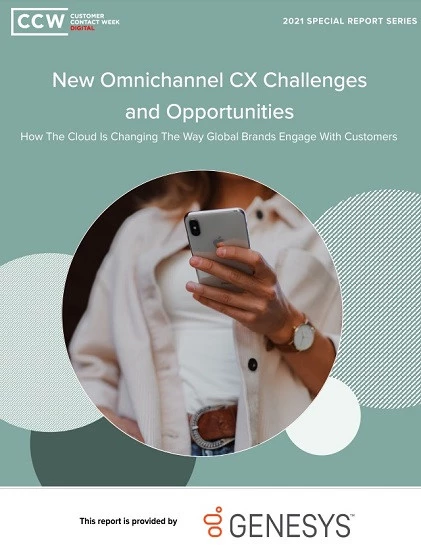Top 5 Social Media Fears
Add bookmarkContact centres know that leveraging social media can bring them closer to their customers, but many are deathly afraid of strategies backfiring and turning into a PR disaster.
Companies are justified in their concern. With an ill-planned social media capability, what should be a private customer interaction can flare up publically, much to a company’s embarrassment.
Unfortunately, their customers are making use of social media. And insofar as falling behind--and out of touch--with those customers is not a viable option, they must continue to foray into the world of social media. They must confronting their social media fears.
Here are five key social media fears and steps for successfully facing them.
[eventPDF]
Fear: Failure
Common question: "There’s a lot of buzz around social media, but how can I
succeed if I don’t know where to begin?"
Face the fear: Planning your social media strategy doesn’t have to be rocket science. Start simple.
First, consider your audience and which social media platforms they predominantly use. If you’re in the B2C space then Facebook might be the place for you. If you’re in the B2B sector, then LinkedIn might be a more appropriate choice. Once you have decided on your platform, you’ll be in a better position to determine the appropriate amount of resources you need to commit to managing your activity through that particular channel.
Several "must-have-tools" to manage activity include IfThisThenThat, Buffer and HootSuite, which allow you to schedule posts at regular intervals and ensure frequent and steady streams of communications.
Fear: Negative Feedback
Common question: "What if my social media presence becomes a target of
people’s negative comments?"
Face the fear: The stinging tail of social media is that an individual’s negative comment can spread rapidly. Even if you have thousands of happy customers, a single bad comment can be seen by all. And it’s worth keeping in mind that customers will likely use social media to spread their frustration whether the company at the source of their frustration is active on social media or not, as demonstrated by www.onholdwith.com.
Being active on social media, however, gives your company the chance to reply and manage negative comments. A recent report by market research firm Harris Interactive discovered that when companies responded to customers who had posted negative remarks via social media, 18 percent went on to become loyal customers, 34 percent removed the negative comment and 33 percent subsequently posted a positive comment! This shows that by engaging with frustrated customers online, companies have the opportunity to convert a disgruntled patron into a loyal customer and earn positive feedback.
Fear: Losing Business
Common question: "Social media is public, so what if competitors use it to identify and target my clients?"
Face the Fear: In this instance, think of the benefits social media offers your existing customers. By offering this very convenient touch point, you have the opportunity to strengthen your customer relationships, encourage loyalty and potentially drive revenue. Whilst competitors could start contacting your existing customers, an existing strong relationship will nearly always trump a message from a competitor.
Fear: Losing Employees
Common question: "What if social media makes it easier for competitors to reach my employees?"
Face the Fear: One of the big challenges facing the contact centre industry is the acquisition and retention of talent. Social media is a channel that can help both these issues. According to an Altimeter Group study, companies that use social media experience increased employee engagement and financial performance. LinkedIn can help you connect with talent, Facebook can promote your company culture and Twitter can showcase your company’s knowledge.
Furthermore, a study by Cisco revealed that 56 percent of young professionals ages 18- 30 would not accept a job offer from a company that bans social media. This means that social media is no longer just a marketing tool. It is an essential channel with cross departmental benefits.
Fear: Fallout
Common question: "If something goes seriously wrong, how much of my time will be taken up with firefighting?"
Face the Fear: A recent survey conducted by reputation management firm Igniyte revealed that more than half of companies questioned (52 per cent) suffered from malicious comments or damaging social media posts. More worryingly one in five said "fire fighting" was now the focus of their entire online strategy, in place of gaining followers or marketing!
A key reason social media incidents get out of control is that they are left mismanaged and/or unresolved. This can add fuel to the fire and lead to a bigger problem than there would have been if the incident had been addressed promptly.
The way to address this is to have a properly resourced social media capability. This sounds simple, yet many companies do not think this through properly, instead considering social media to be an auxiliary channel and resource it accordingly. Don’t cause yourself more hassle by under-resourcing this pivotal customer channel.












